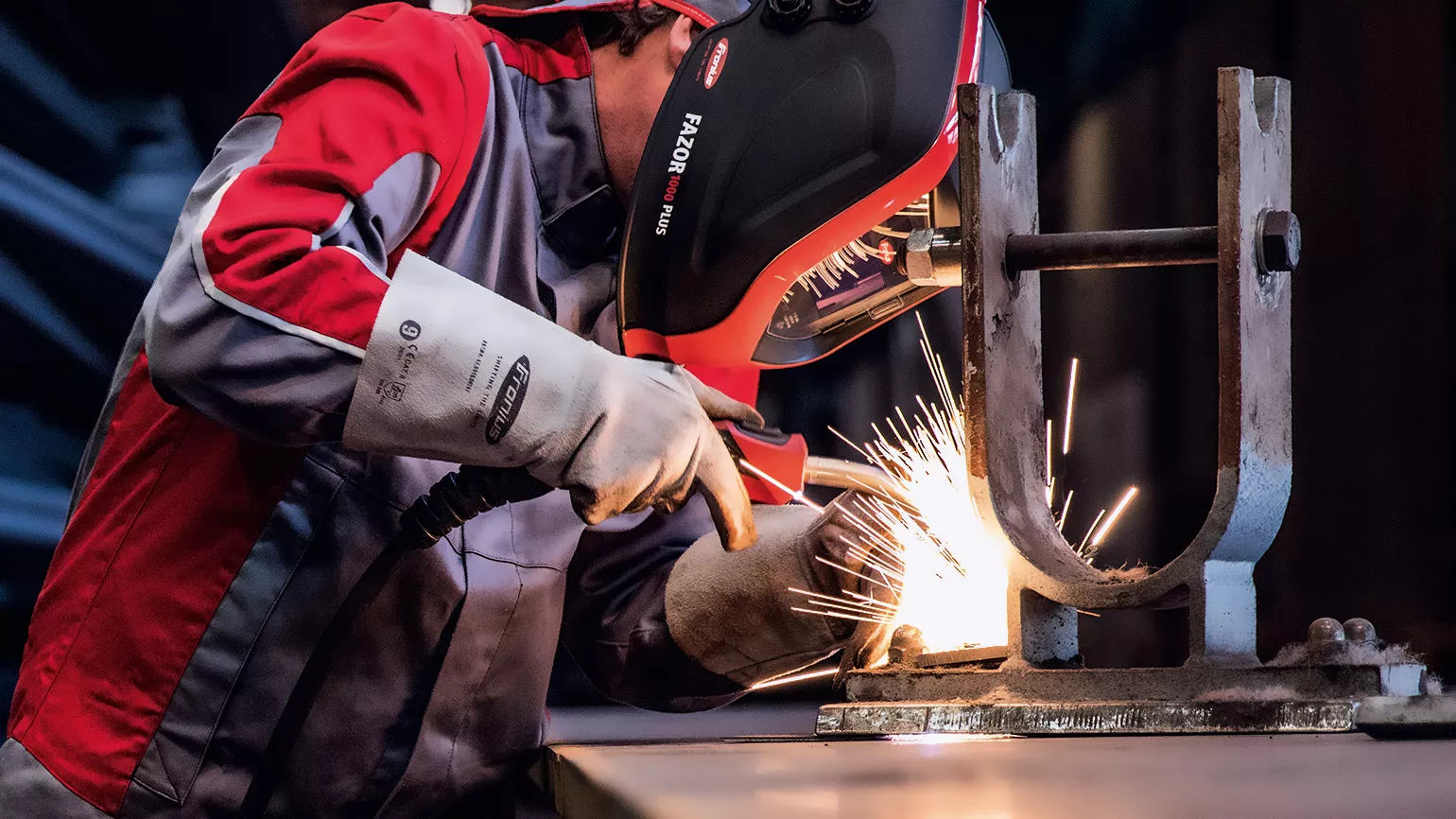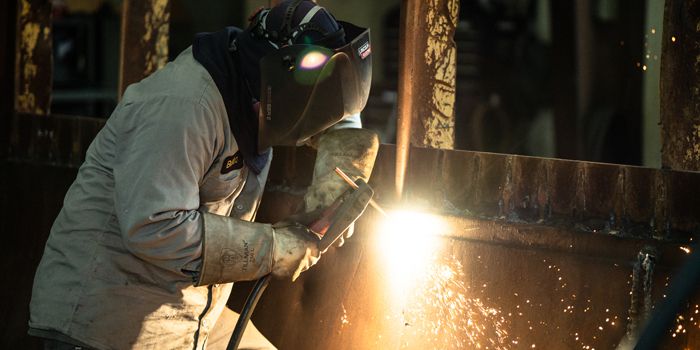Root reasons behind weld porosity and how Belgrade Welding fixes them
Wiki Article
Usual Welding Repair Work Issues and How to Address Them Effectively
Welding repairs often run into a variety of concerns that can endanger the stability of the last item. Common problems include insufficient infiltration, porosity, and imbalance, among others. Each issue presents special difficulties that call for specific approaches for resolution. Understanding these issues is necessary for welders aiming to improve their results and skills. This discussion will certainly discover these usual welding repair concerns and reliable approaches to address them.Insufficient Infiltration
Insufficient infiltration happens when the weld steel fails to totally fuse with the base material, causing weak joints and possible structural failures. This problem usually originates from not enough warmth input, wrong electrode angle, or improper welding rate. Welders may come across poor infiltration as a result of a miscalculation of the necessary parameters for a details material density or kind. In addition, contamination on the base material's surface can impede reliable bonding, aggravating the issue. To attend to insufficient penetration, welders need to ensure proper settings on their tools and preserve a tidy job surface. Regular assessment of welds is recommended to identify any deficiencies early, permitting prompt modifications and the avoidance of endangered structural integrity in welded assemblies.Porosity
Porosity is a typical defect in bonded joints that manifests as small gas bubbles caught within the weld steel. This issue can jeopardize the honesty of the weld, leading to reduced stamina and possible failing under anxiety. Montana Mobile Welding and Repair Fabrication. Porosity typically arises from contamination, moisture, or inappropriate welding methods, which permit gases to get away right into the liquified weld swimming pool. To attend to porosity, welders must assure correct surface prep work, maintain a tidy workplace, and make use of suitable welding specifications. Additionally, choosing the appropriate filler product and shielding gas can alleviate gas entrapment. Normal assessment and testing of welds can help identify porosity early, guaranteeing timely rehabilitative activities are taken, therefore maintaining the top quality and reliability of the bonded frameworkMisalignment
Misalignment in welding can emerge from numerous elements, including inappropriate setup and thermal expansion. Understanding the origin is vital for reliable resolution. Several modification methods are offered to straighten elements and ensure architectural stability.Sources of Imbalance
Welding imbalance typically stems from a range of underlying concerns that can endanger architectural integrity. One main reason is incorrect fit-up of elements before welding, which can result in spaces and uneven surface areas. Variants in thermal expansion during the welding process can also lead to distortion, especially if the products being joined have various coefficients of expansion. In addition, insufficient fixturing and securing may fall short to hold elements safely in position, resulting in motion during welding. Poorly conserved equipment, consisting of welding makers and devices, may introduce variances in the weld grain, further adding to imbalance. Operator mistake, stemming from not enough training or experience, can likewise play a substantial function in producing misaligned welds.
Correction Methods Readily Available
Addressing misalignment effectively needs a mix of rehabilitative strategies customized to the details concerns handy. One usual method is the use of jigs or components to hold components in the appropriate setting throughout welding, making certain regular positioning. Additionally, pre-heating the materials can aid reduce distortion and boost fit-up. For considerable imbalance, mechanical realignment methods, such as making use of hydraulic jacks or clamps, can be utilized to fix the placement before welding. Post-weld warmth treatment may also be necessary to alleviate tensions triggered by imbalance. Lastly, mindful inspection and modification during the configuration phase can protect against misalignment problems from ending up being significant issues, promoting a smoother welding procedure and improving total architectural integrity.Distortion
Distortion is a common challenge in welding that can develop from different aspects, including unequal heating & cooling. Comprehending the causes of distortion is important for executing efficient prevention methods. Addressing this issue not just enhances structural honesty but also enhances the overall high quality of the weld.Sources of Distortion
When subjected to the intense warmth of welding, products typically undergo modifications that can bring about distortion. This phenomenon mainly occurs from thermal development and contraction during the welding process. As the weld location warms up, the product broadens; upon cooling, it acquires, which can develop internal stress and anxieties. Furthermore, uneven home heating throughout a workpiece can exacerbate these stress and anxieties, resulting in warping or bending. The type of product likewise plays a considerable duty; steels with differing thermal conductivity and coefficients of growth might react differently, leading to uncertain distortions. Moreover, poor joint layout and insufficient fixturing can add to misalignment during welding, raising the likelihood of distortion. Understanding these causes is important for efficient welding fixing and avoidance strategies.Prevention Techniques
Effective avoidance techniques for distortion during welding focus on controlling warmth input and making certain proper joint layout. Maintaining a consistent heat input helps to lessen thermal growth and contraction, which can bring about distortion. Using techniques such as preheating the workpiece can also minimize the temperature slope, promoting uniform heating. Additionally, picking ideal joint layouts, such as T-joints or lap joints, can improve security and reduce stress and anxiety focus. Implementing appropriate fixturing to secure the workpieces in position further help in maintaining positioning during the welding procedure. Finally, staggered welding sequences can distribute warm a lot more uniformly, protecting against localized distortion. By applying these strategies, welders can considerably lower the possibility of distortion and enhance the general quality of their welds.Cracking
Splitting is an usual problem come across in welding repair services, commonly resulting from numerous variables such as improper air conditioning rates, product selection, or inadequate joint preparation. The event of cracks can significantly jeopardize the stability of the weld, causing prospective failures during operation. To address this problem, welders have to initially analyze the origin triggers, making sure that materials are suitable and properly chosen for the specific application. Additionally, regulating the cooling rate throughout the welding process is necessary; quick cooling can generate stress and bring Find Out More about splitting. Proper joint design and prep work likewise add to reducing the risk. Applying these strategies can enhance weld high quality and longevity, eventually decreasing the probability of splitting in ended up weldments.
Insufficient Combination
A considerable problem in welding repair work is incomplete fusion, which happens when the weld metal does not appropriately bond with the base material or previous weld passes - Montana Mobile Welding and Repair Belgrade Fabrication. This flaw can result in weak points in the joint, possibly compromising the stability of the bonded structure. Variables contributing to incomplete blend consist of not enough warm input, incorrect welding strategy, and contamination of the surface areas being joined. To address this issue successfully, welders must assure correct pre-weld cleansing and surface area prep work, as well as adjust their welding specifications to attain appropriate penetration and blend. Routine assessment throughout the welding process can also help determine insufficient blend early, enabling timely rehabilitative actions to boost the total top quality of the weldOverheating
While welding repairs can improve structural stability, overheating offers a considerable challenge that can lead to material deterioration. Extreme warm throughout welding can change the mechanical homes of steels, leading to minimized stamina, enhanced brittleness, and bending. This phenomenon is especially crucial in high-stress applications where structural dependability is paramount. Recognizing overheating can involve aesthetic evaluations for staining or distortion, in addition to checking temperature level throughout the welding procedure. To mitigate the dangers linked with getting too hot, welders should use suitable strategies, such as managing warm input, readjusting travel speed, and utilizing suitable filler materials. Additionally, implementing pre- and post-weld warm therapies can aid bring back material homes and improve the total quality of the fixing, ensuring long-term efficiency and security.Often Asked Inquiries
What Are the Typical Signs of a Welding Issue?

How Can I Evaluate My Welds for Quality?
To check welds for quality, one can utilize visual evaluations, ultrasonic screening, and radiographic methods. Each strategy assures structural integrity, this post identifies problems, and confirms adherence to defined requirements, ultimately improving the reliability of the bonded joints.What Safety Preventative Measures Should I Take While Welding?
When welding, one need to prioritize safety and security by using ideal personal safety devices, ensuring correct ventilation, securing combustible products away, preserving a clean work space, and knowing environments to avoid injuries and accidents.Can I Repair a Weld Without Renovating the Entire Joint?
Fixing a weld without redoing the entire joint is possible, relying on the damage (Montana Mobile Welding and Repair Welding). Strategies such as grinding, adding filler product, or using a welding procedure can successfully address details defects while protecting the surrounding frameworkWhat Devices Are Essential for Reliable Welding Services?
Necessary devices for efficient welding repair work consist of a welding maker, cable brush, grinder, safety gear, clamps, and filler materials. Each tool plays an essential role in making certain top quality and security throughout the fixing process. Porosity usually arises from contamination, moisture, or incorrect welding methods, which permit gases to escape into the liquified weld pool. Inadequately conserved equipment, including welding makers and tools, might present inconsistencies in the weld grain, more adding to imbalance. When subjected to the extreme heat of welding, materials commonly undertake adjustments that can lead to distortion. Cracking is a typical issue encountered in welding fixings, typically resulting from numerous elements such as inappropriate cooling rates, material choice, or insufficient joint preparation. A considerable problem in welding repair work is Resources incomplete blend, which takes place when the weld metal does not properly bond with the base material or previous weld passes.Report this wiki page